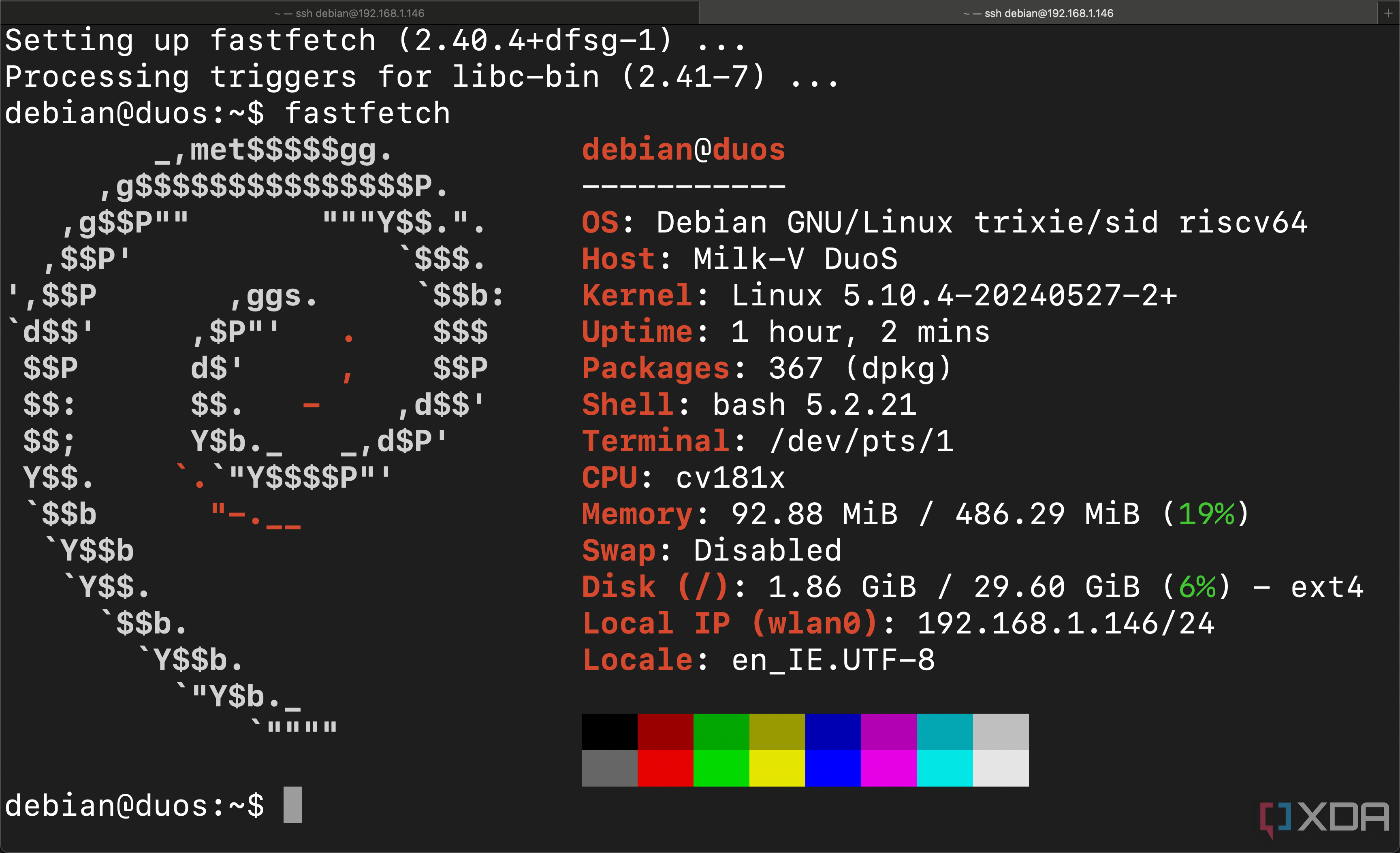Nearly a year ago, I first got my hands on the Milk-V Duo S, an SBC with two RISC-V cores and an Arm core. You can use a slider to switch between the two modes when booting, though it wasn’t possible to boot off the Arm core at first. The company has put out updates and released new bootable images, including an image that can boot from its Arm core. Over time, many community members built their own images based on RISC-V for the Milk-V Duo S as well.
I’ve been playing around with the Milk-V Duo S over the past few months, including using the Arm build for quite a while. While not as fun as playing with RISC-V, it was pretty easy to get Bluetooth up and running on the Arm build, where it seemed impossible to get it to work on the RISC-V build. Now, though, I’m using a Debian build on RISC-V, everything works, and it’s become an important piece of my smart home.
An SBC with Bluetooth can be incredibly useful
It controls a few different devices in my home
I have a few different Bluetooth devices in my home, including my Govee H615B lights, a Xiaomi Smart Scale, and a Xiaomi Bluetooth Night Light, which is activated by motion. All of these can also be controlled over Bluetooth LE, which the Milk-V Duo S supports. I’ve already deployed my controller for the H615B lights on it, and through the use of an API that I wrote and exposed in the Flask app, I can control it from Home Assistant with ease.
That’s not all, though. The data from the Xiaomi Smart Scale can also be measured, and it has full body composition support. In the case of the night light, it can work as a motion detector, which can be incredibly useful. For example, I can place it just inside my bedroom door so that it can detect when I come in, and when it’s activated, it can switch the light on in my room. It’s a super basic system, but for a super basic SBC, it more than gets the job done.
Of course, there are definitely more advanced projects I could conduct with this, too. For example, the ability to host a web server on it is already fantastic, and it would be pretty rudimentary to attach an additional USB drive to it for basic cloud storage. It’s not the most powerful of devices (and there can be a slight delay when issuing Bluetooth commands, for example), but it does work, and as a solution for non-critical services (such as lighting, where they’re simply for aesthetics), I’m happy with that.
On top of that, the passive collection of data from other Bluetooth-enabled devices is not time-critical in my case, so I’m happy for it to continue chugging away in the background and passing data to an MQTT server or my Home Assistant instance. I don’t have another way to collect data from these devices, and so this little RISC-V board manages to play an important part in my smart home.
Your SBCs don’t need to be powerful
Especially when it can still run Debian
Despite only having 512MB of RAM and a basic RISC-V processor, the Milk-V Duo S is proof that your SBCs don’t need to be smart to be useful. There are plenty of add-ons and accessories you can pick up for one of these boards, and there are many boards like this out in the wild with a similar level of affordability and usefulness. While not everyone will have a use for one of these (I simply used mine to tinker with occasionally until recently), the ones that do will likely know who they are.
As for why I opted to use Debian and not the preinstalled Python version, I wanted to deploy this project using the RISC-V platform, just because I could. It worked on Arm without any issues, but the official images that booted on the RISC-V core couldn’t actually use Bluetooth. While the service started, and I could register the Bluetooth controller with the system, it still didn’t work. I struggled with it for a while, but given that I knew it just worked on Arm, I figured that there must be other images out there with other operating systems. I know that Debian has the robust Advanced Packaging Tool (apt) package management system, which seemed like a no-brainer for a quick and easy deployment.
With Debian, this board is perfect. Wi-Fi works, Bluetooth works, and you can get it up and running in minutes. If you have an old SBC lying around, chances are there’s something you can do with it. Maybe it won’t be glamorous or particularly life-changing, but you might have a use for that old board sitting in a drawer somewhere. Thanks to its inclusion of Bluetooth and Wi-Fi, I was able to turn a $10 RISC-V SBC into a crucial part of my smart home.












